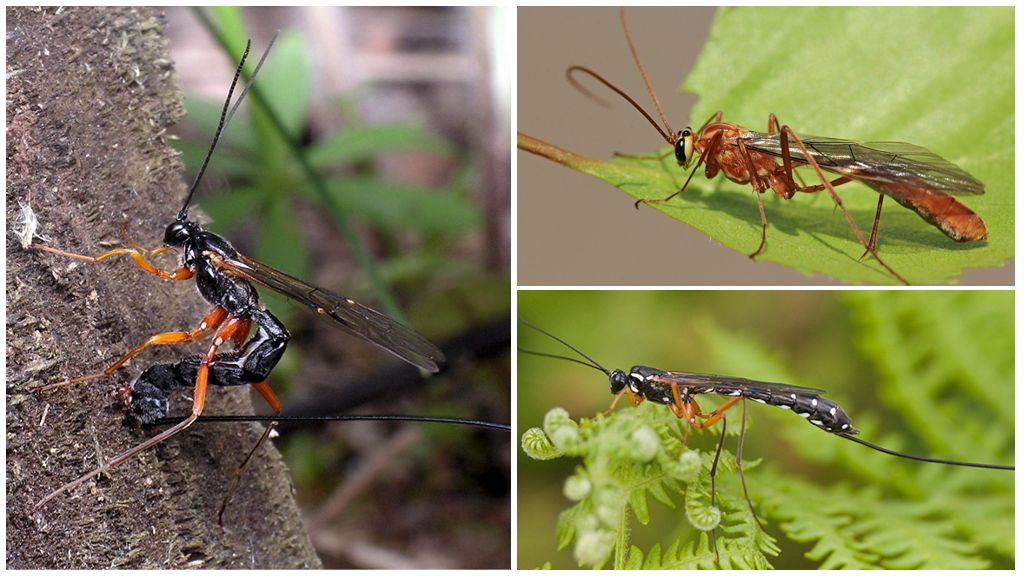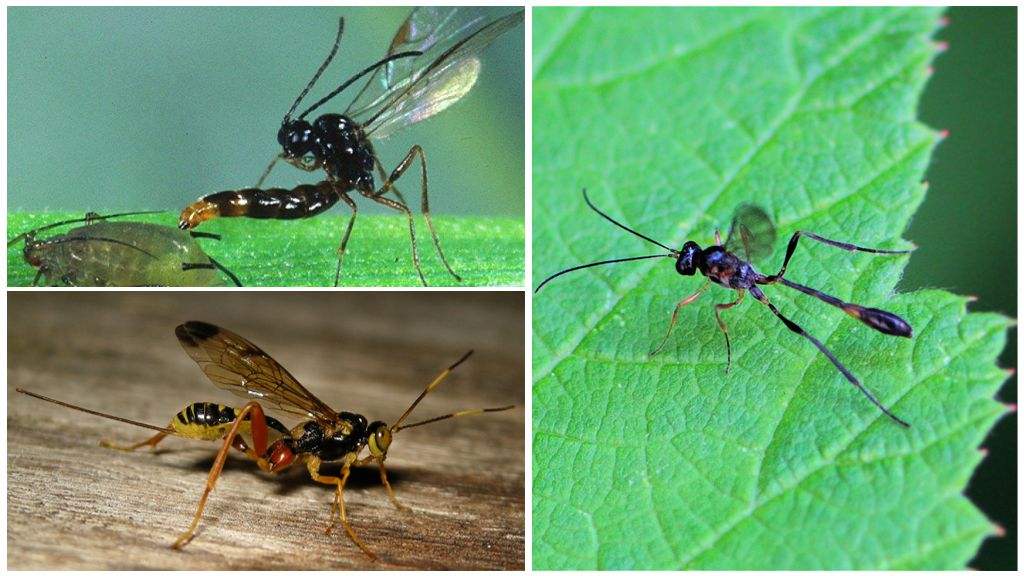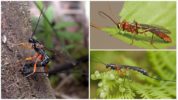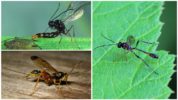- Beetle rider
- Beetle rider
Among the numerous insects, one can distinguish a group of special assistants who actively destroy harmful relatives. These include the insect rider. He got his name thanks to the position that he takes while laying eggs in his prey. The female sits on the back of her prey as a horseman and thrusts her pointed ovipositor into the most vulnerable spot.
Description of appearance
The beetle rider is not really a beetle, as everyone used to see it. It belongs to the order Hymenoptera, suborder stalkobryuchnye and more reminiscent of a dragonfly or wasp. About 100 thousand species of such insects are counted, which are parasites for many pests. Their sizes are from 1 mm to several centimeters.
The body of the hymenoptera is elongated. At the end of the back there is an impressive ovipositor - an organ designed to lay eggs. Its size is sometimes comparable to the size of the entire insect. The end of the ovipositor is pointed so that it can be immersed in the victim’s body or even pierced with the bark of trees.
The rider has 3 pairs of legs, a relatively small head with long antennae located on it. They serve their master as sensory organs. The wings have an elongated shape, when folded, they are located one above the other on the back of the insect. In females of some types of parasites, wings are absent, which makes them very similar to ants.
On a note!
At first glance at this unusual creature, the question arises: is the beetle rider dangerous to humans or not. For this parasite, a person is not of any interest. Most species do not even have jaws and are not able to bite, and those who have can apply a harmless bite only as a last resort.
The predominant color is black with transitions in yellow, orange or red. Feet usually have a shade of red or red. Wings are transparent with gray or brown tinting. On the Internet there are photos of a rider beetle with an unusual body color: striped, spotted, bright orange, red. Due to such a variety of colors on the body, they are often confused with wasps, bees and other insects. In addition, their oviparous organ closely resembles a sting.

Breeding
Adult riders do not live long. The main purpose of their life is reproduction. A fertilized female must find a suitable victim for procreation. Each species of riders is characterized by the use of certain types of insects as victims. They can become:
- bed bugs;
- apple codling moths;
- weevils;
- asparagus crackers;
- butterfly caterpillars;
- barn fire;
- leaflets;
- ladybugs;
- beetle larvae;
- ants other.
Interesting!
Some riders, not finding a suitable victim for laying eggs, can attack spiders and even scorpions.
There are two methods of parasitism: ectoparasites - riders whose larvae develop near the larvae of other insects, eventually eating them; and endoparasites - hymenoptera, laying their eggs directly in the body of the victim, thereby providing their offspring with a constant source of food. There are also species such as superparasites or superparasites - insects that parasitize on parasites. These include some types of riders.
The ectoparasitic representatives of the hymenoptera have longer ovipositories with a needle-like end. It allows the insect to penetrate with a needle under the bark of the tree, where the larvae of beetles and other pests are located, and lay its eggs there. A few days later, larvae emerge from them, which with pleasure eat their neighbors.
Endoparasite riders are the most daring of their family. They have to have riding skills to stay on their backs with the victim stunned by such impudence. Large caterpillars and bugs can throw off an arrogant parasite. Therefore, the female rider should lay eggs as a victim as soon as possible, staying at his withers. One of the representatives of this family of braconid has the ability to inject poison into its fast horse, which paralyzes it.
Important!
Is an insect rider dangerous for a person if he wants to inject poison? This parasite does not consider a person as its victim, so there is no need to be afraid of it.

Further, the larvae safely come into the world, surrounded by the soft nutrient tissues of the affected bug or caterpillar and begin to eat them from the inside. Then the grown children gnaw through the nerve endings of their food source, paralyzing it, and use the body as a protective membrane for pupation. After several days, an imago appears from the pupa and flies away according to its business. The victim sometimes recovers from all these shocks and can continue his life further.
Harm and Benefit
Hitting pests of trees and plantsRiders provide significant assistance in their extermination. Some species of these beneficial insects are even protected by the state as valuable helpers. They control the number of harmful insects, thereby establishing a balance in nature.
Thanks to the work and the active participation of parasitic riders in the destruction of harmful insects, agricultural workers and ordinary landowners can reduce the use of toxic substances and chemicals in the beds. This has a positive effect on the quality of the harvest and the environmental situation.
Often, riders can be found in warehouses of grain and bulk products. There they are looking for their victims - a barn fire and food moth. In rare cases, having failed, they can masonry in food products, which will entail damage to the goods and damage to humans. But, given the number of pests destroyed, minor wrecking by the parasite rider will not spoil its image in the eyes of people. Therefore, when you see these strange insects with a long tail-sting in their garden or in the garden, do not rush to destroy them.






The same individual, of red color, sat on his back, wanted to smell, stung like a wasp. At what the bite was oblong with a round at the end. In the morning the bite disappeared.